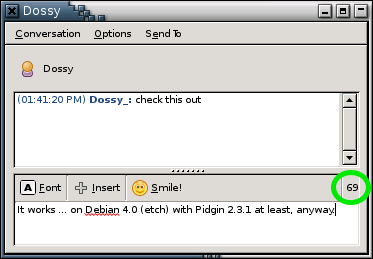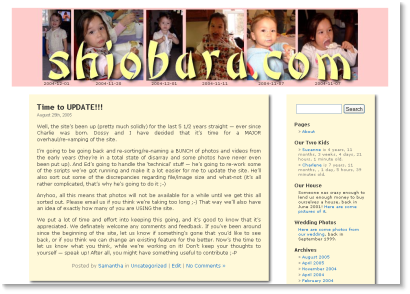I’m setting up a virtual machine using VirtualBox on Ubuntu Gutsy, running Win2000 as the guest OS. I’ve gone and installed Cygwin and MinGW and MSYS in order to build Gnash on Win32. I came across a funny bootstrapping problem trying to install pkg-config: pkg-config 0.22 requires glib 2.x in order to compile. No sweat, I go and download glib 2.13.6 and configure it … and the configure script stops with an error when it can’t find pkg-config installed!
Circular dependencies suck.
Of course, in the README.win32 for pkg-config, Tor Lillqvist acknowledges this at the end of the document:
On Unix, pkg-config is built using its own copy of GLib 1.2.8. On Windows, we use the normal GLib available for Windows (2.0.x). Yes, this does introduce a kind of circular dependency. But, that can be worked around. The circular dependency only appears if one uses the configure mechanism to build GLib. GLib’s configure script checks for pkg-config. pkg-config depends on GLib. Thus, starting from scratch, with no GLib and no pkg-config, using configure, there would indeed be a Catch-22 situation. However, GLib can be built just fine using the manually written makefiles for mingw or MSVC. And if somebody does want to build GLib on Win32 using configure, she can first install a prebuilt pkgconfig.
Unfortunately, as of glib 2.13.6 at least, only the automake files are included–no ordinary makefiles for Win32, either MinGW or MSVC, even. Fortunately, older releases of pkg-config source are still available, and glib 2.13.6 will build with pkg-config 0.14 or newer. pkg-config 0.14 includes glib 1.2.8 and tries to build it as part of its build, so I went ahead and tried to build pkg-config 0.14. Since nothing is ever easy, I ended up having to make a slight change to glib 1.2.8 to get it to compile, adding these lines to the top of glib.h, after the #include <glibconfig.h>:
#undef G_MAXINT
#define G_MAXINT 0xFFFF
#define SIGCHLD 17
#define g_ascii_strcasecmp(a, b) strcmp(a, b)
#include <fcntl.h>
#include <winsock.h>
I also discovered that gthread.o wouldn’t compile right due to some libtool weirdness, so I had to compile everything somewhat manually with this:
$ cd glib-1.2.8/gthread
$ gcc -I.. -DHAVE_CONFIG_H -DG_OS_WIN32 -o gthread.o -c gthread.c
$ touch gthread.lo
$ cd ..
$ make libglib.la
$ cd ..
$ make CFLAGS="-DG_OS_WIN32" parse.o
$ make pkg-config.exe
$ cp pkg-config.exe /mingw/bin
After all that, I finally had a compiled and installed pkg-config 0.14! I went ahead and used it to build glib 2.13.6 and installed that, then went and built pkg-config 0.22 with it.
So, which came first? The chicken or the egg? :-)
Tags: Open Source, MinGW, glib, pkg-config














Latest comments